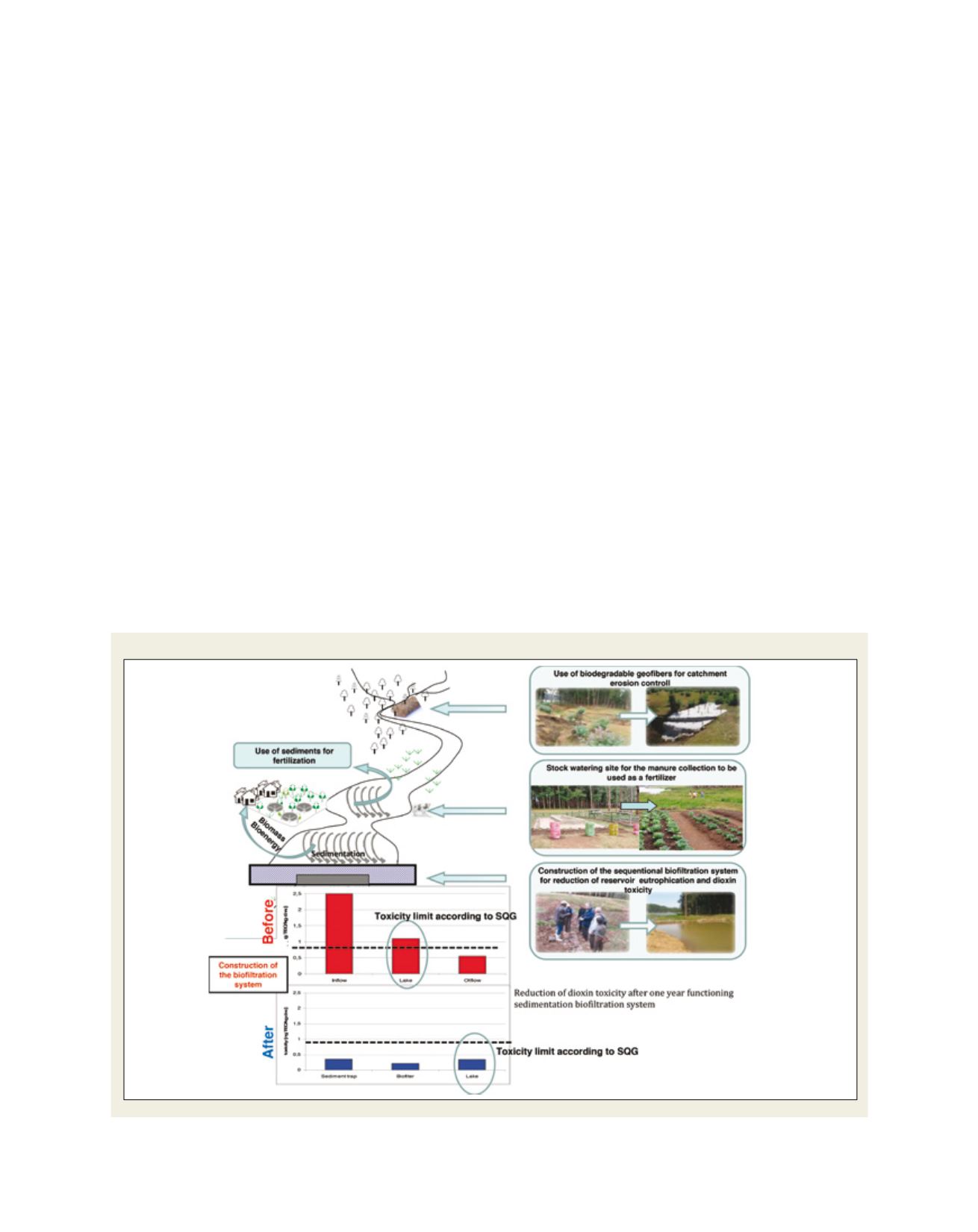

[
] 303
I
nternational
C
ooperation
on
W
ater
S
ciences
and
R
esearch
The second element is an infiltration dam. This
enforces sedimentation in the impoundment and trans-
fer of water through the gravel fundaments to the root
system of vetiver grass at the wetland, helping to reduce
nitrogen and phosphorus concentrations and prevent-
ing the occurrence of toxic algal blooms in the reservoir.
Sediments deposited in the sedimentation zone, which
are supposed to contain high levels of nutrients, are
recommended to be used as fertilizer for restoring eroded
land and for food and bioenergy production.
The high rate of insolation and the interaction
between plants and soil microorganisms in the wetland
area also allow a reduction in dioxin-induced toxicity
by accelerating photo- and rhizodegradation processes.
Another part of the system is the construction of a
cow-watering system some distance from the river,
where the manure is collected and digested for further
use as fertilizer. This reduces the direct nitrogen input
of cows into the river and reservoir.
The proposed ecohydrological holistic approach was
based on earlier experiences in the Pilica and Sokołówka
River catchment in Poland.
25
The above solutions are
focused on the sustainable use of environmental poten-
tial and the enhancement of ecosystem services for
society, including health aspects (reducing the dioxin
concentration in the environment and foodstuffs) and
improving opportunities for income generation from
the production of food and bioenergy.
tial for dynamic development. The fundamental opportunities
are resources: fertile soils, a long growing season and human
potential. However, major threats in many regions are created by
the limited and poor quality of water resources due to progressive
deforestation and urbanization. This process is causing serious
modification of the hydrological and nutrient cycles, which in
turn determine soil productivity. Therefore, the key challenge for
the sustainable future of Ethiopia and Africa is the restitution of
water and soil resources.
Pilot ecohydrological research at a demonstration area in the
Biofarm Centre in Asella (Central
Ethiopia), where the water from the reservoir was not used by
local people due to negative impacts on human health, demon-
strated three major impacts on the functioning of this ecosystem:
• a decrease in reservoir capacity due to erosion and siltation
• toxic algal blooms in the reservoir, mostly due to nutrient
overload by livestock
• elevated concentrations of dioxins in reservoir sediments.
All these impacts have been reduced by the implementation of
ecohydrological systemic solutions.
The first element of the system is the use of biodegradable
geotextiles for land erosion control and the reduction of lake
siltation. Geotextiles enhance the early stages of the plants’
growth by stabilizing the soil and it moisture. After the two-year
development of the root system the geotextiles decay, enhanc-
ing the ecological functions of the catchments and ecosystem
services for society.
Source: ERCE
Use of ecohydrology based systemic solutions for reduction of sedimentation, eutrophication and dixin-induced toxicity


















